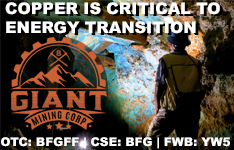Americans have a higher risk of finding themselves without power this summer as extreme weather and increasing pressure from artificial intelligence (AI) and data centers could stress the grid, according to a report by The Washington Post's Evan Halper recently.
The nonprofit regulatory authority that monitors the electricity system, the North American Electric Reliability Corp., or NERC, is dedicated to reducing risks to power networks, he wrote. It said power demand is sharply up since last summer, increasing at more than double the rate it did between 2023 and 2024.
"The U.S. is now projected to need 10 gigawatts (GW) more electricity in the upcoming summer season than it did last summer — the equivalent amount of power it takes to keep the lights on in as many as 10 million homes," Halper wrote. "The proliferation of energy-hungry data centers and manufacturing plants is a key cause. They are consuming energy faster than utilities can bring new power plants online. Additionally, scorching temperatures drive more air-conditioning use in homes and businesses, creating a major strain on electricity systems."
And it's not just in North America, an electrical transformer recently sent Europe's busiest airport into darkness, affecting nearly 300,000 passengers, diverting or canceling more than 1,400 flights, and costing airlines an estimated 100 million pounds in lost revenue and passenger care expenses.
Flights at London's Heathrow Airport were able to resume the next day. While the cause was ruled either human error or equipment malfunction, the incident drew attention to aging electrical grids: a U.S. government report from 2024 found that more than 70% of the country's electrical grid is more than 25 years old.
Adding to the fears are recent reports that U.S. government officials have found undisclosed communication devices on the power inverters of some Chinese-manufactured solar panels, according to a report published last week by Reuters.
Chinese companies are required to cooperate with Chinese intelligence agencies, and the devices could enable the Chinese government to skirt firewalls and switch off the inverters remotely, or change their settings, destabilizing power grids, damaging energy infrastructure and triggering blackouts, according to the Reuters report.
"That effectively means there is a built-in way to physically destroy the grid," one of the unnamed sources told Reuters.
America's Power Grid at 'Elevated Risk'
The NERC report said large amounts of wind and solar power being added to the grid have complicated the issue, with their "inability to feed energy around-the-clock to the aging power network" possibly destabilizing it, Halper wrote for The Post.
At the same time, aging gas and coal plants are being retired. This is an issue for the regional power grid that serves 15 states from North Dakota to Louisiana, where there will be less power available this summer than there was last summer.
"With higher demand and less firm resources," the NERC report said. "America's sprawling power grid "is at elevated risk of operating reserve shortfalls during periods of high demand or low resource output."
This is leading to new attention to the nuclear and uranium industries. According to a market analysis on GoldFix May 23, President Donald Trump signed an executive order invoking the Defense Production Act to address U.S. reliance on enriched uranium and nuclear supply chain inputs from China and Russia.
"The action declares a national emergency and directs federal agencies to streamline permitting, designate federal lands for reactor sites, and activate the Department of Energy's Loan Program Office to finance reactor construction," the report said.
According to the analysis, Goldman Sachs maintains a constructive outlook on the nuclear sector and has reiterated its Buy rating on uranium producer Cameco (CCJ/CCO.TO), citing "upside from expanded fuel demand and a potential acceleration in reactor builds."
The executive order may also benefit small modular reactor (SMR) developers if additional loan allocations are directed toward civilian and defense applications, the GoldFix report said.
No Overnight Fixes
Compounding the energy crunch is a rapid push to expand domestic manufacturing and build data centers, which are extremely energy hungry, Juan Macias, Chief Executive Officer of AlphaStruxure wrote in an opinion piece for Utility Drive in February.
"For instance, a single new computer chip factory in upstate New York will eventually require as much power as New Hampshire and Vermont combined," Macias wrote. "The utility grid is planned on multi-decade investment cycles and timelines; this accelerated load growth arose only a few years ago. Long-term energy planners had not factored in America’s manufacturing renaissance and the spread of AI. They’re now playing catch-up to prepare the grid for a sudden and sizable build-out."
Given the scale, he said the primary solution is to increase grid capacity by generating more power and finding new efficiencies, but these efforts "aren't overnight fixes."
"Building and connecting new energy resources and navigating our nation's permitting approval process is extremely cumbersome," Macias wrote.
The country needs to build 1,400 to 10,100 miles of new high-voltage transmission lines each year to enable the renewable energy that's needed, the National Renewable Energy Laboratory estimates, according to Macias' report.
"In 2023, the country built just 251 miles of lines and worse still, that number has been steadily declining year over year," he said. "Because of this backlog, there's now more generating capacity in our nation's interconnection queues than the total capacity of the existing U.S. power plant fleet. The hard truth is that due to our paralyzed regulatory framework, there is no silver bullet waiting around the corner that will deliver the large-scale infrastructure that's needed."
Eguana Technologies Inc.
Eguana Technologies Inc. (EGT:TSX.V; EGTYF:OTC), a leading provider of high-performance energy systems, creates systems that could be a solution to the problem by giving utilities flexibility to increase feeder growth incrementally.
Eguana's Evolve VPP (virtual power plant) uses smart batteries at the edge of the grid (the homes and businesses that use the energy) tied to software that helps distribute and store energy in the batteries when it's not needed and makes it available to the grid at peak times.
*"The rickety traditional centralized grid structure is at or close to its limits and requires transformation," wrote Technical Analyst Clive Maund about the company on March 24. "The advantages of this transformation will be huge — a massive increase in capacity, vastly more efficient utilization of power generated, decreased demand on centralized power generation, and protection of the end user, corporate or private, from power outages."
Maund said he viewed the stock as having an "exceptionally positive risk/reward ratio" and rated it a Strong Buy for all time horizons, with targets of CA$0.20; CA$0.60, CA$0.70, CA$1, or CA$2.
A 'Major Milestone for the Industry'
Eguana recently announced it was collaborating with Itron Inc. "to deliver advanced utility control functionality through a standards-based integration of its energy storage systems with Itron's IntelliFLEX grid-edge DERMS solution."
 Streetwise Ownership Overview*
Streetwise Ownership Overview*
Eguana Technologies Inc. (EGT:TSX.V; EGTYF:OTCQB)
Eguana and Itron will jointly, and independently, market the combined solution to respective utility customers, with a focus on utilities that are interested in ramping up distributed energy storage procurement but prefer to use a grid-edge dispatch and monitoring network that is already well established and integrated into their operations, the company said in the release announcing the partnership.
"This integrated solution marks a major milestone for the industry," Eguana Chief Executive Officer Justin Holland said. "No longer will residential energy storage systems be consigned to simply supplying backup power with the occasional optional dispatch for demand response. The integrated IntelliFLEX with Evolve opens the door to deploying energy storage assets as an essential contributor to grid capacity and infrastructure."
Ownership and Share Structure
According to the company, about 0.5% is owned by management and insiders.
24.6% is held by the Japanese ITOCHU Corp., the company said.
The company's market cap of CA$2.94 million, according to Refinitiv. Its 52-week range is CA$0.05 and CA$0.20.
| Want to be the first to know about interesting Renewable - Wind, Renewable - Geothermal, Technology and Renewable - Solar investment ideas? Sign up to receive the FREE Streetwise Reports' newsletter. | Subscribe |










































